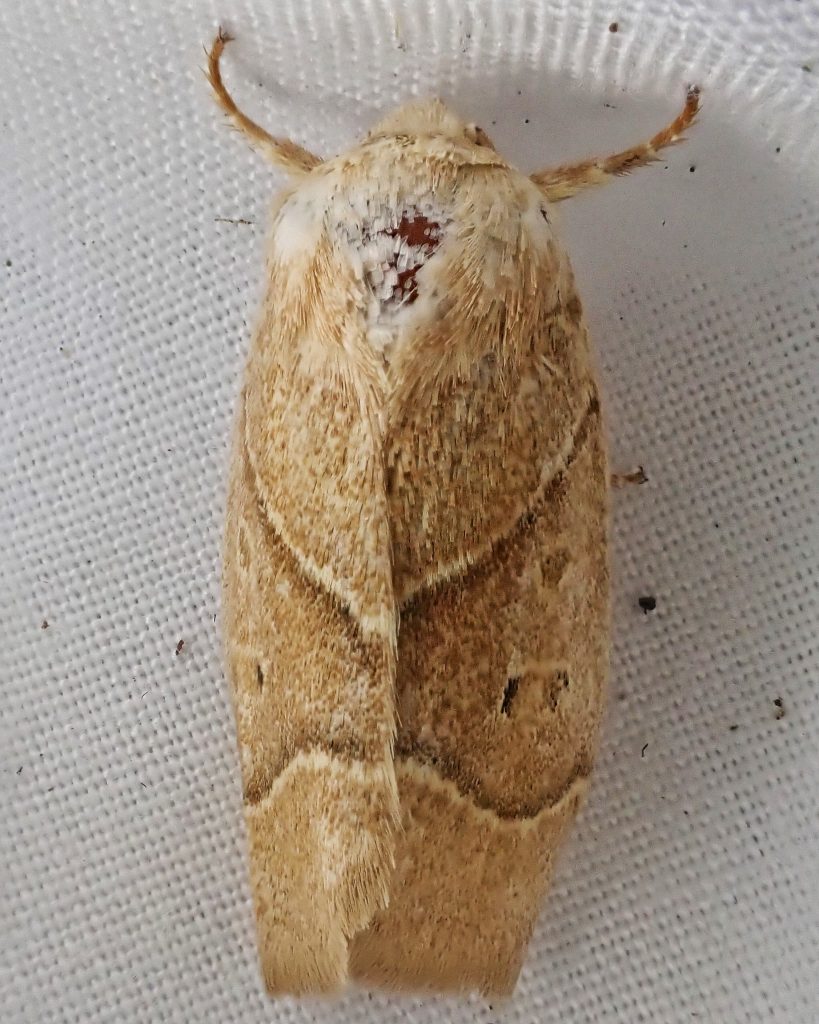
This is the coolest moth I have found thus far while doing the mothing I describe in ‘Housesitting’, and I almost missed finding it at all because it was tucked into a fold of the sheet and I didn’t see it until I was putting things away at first light so that the sprinklers wouldn’t soak my setup. What makes it so cool is that less than 1% of all lepidoptera are predaceous, and these caterpillars make a habit of eating other moth larvae, mostly the inchworms in Geometridae. They can subsist on oak leaves alone, so it is unclear why they feel a need for meat, but the fact that they are hunters is well documented.
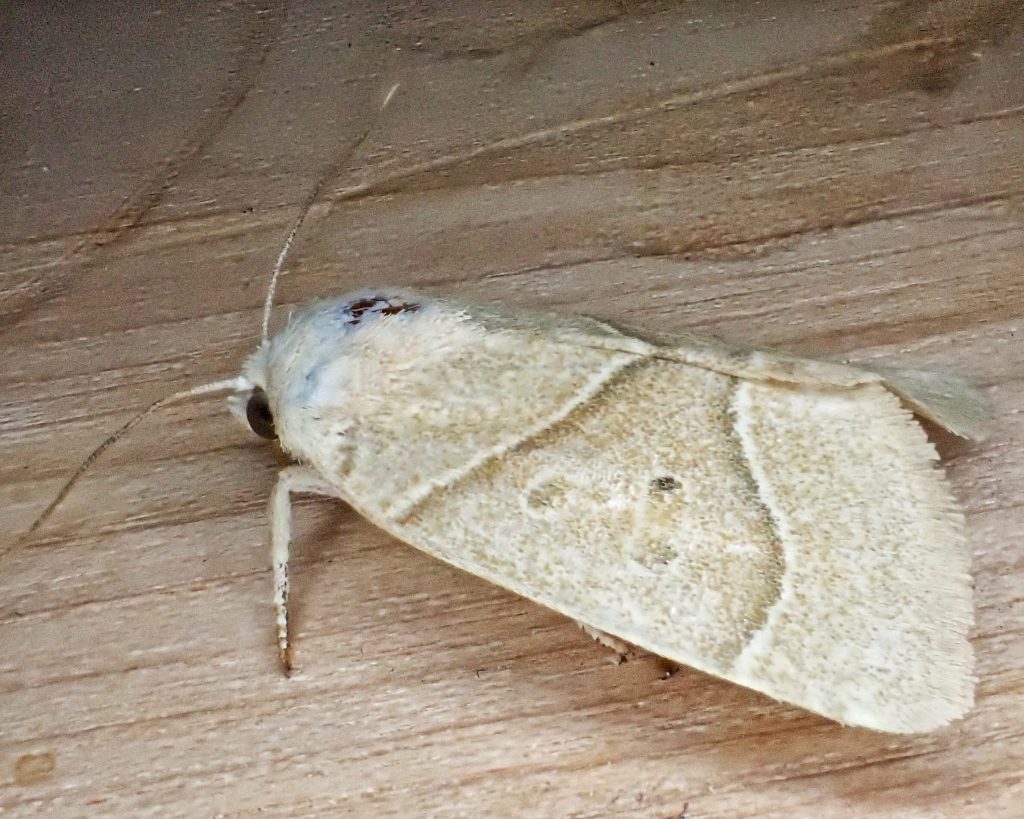
I didn’t know of the carnivorous nature of the larvae of this moth because I had never found one before, and beyond thinking it was a noctuid I really didn’t have a clue as to its identity. And because I was intrigued by this moth and it wasn’t even sunup and I was still uncaffeinated, it took the easy way out and downloaded the photos I’d taken to my phone whilst boiling water for my tea, and then ran them through Leps | Fieldguide, which only gave me a couple options, and after a quick perusal of the MPG site Cosmia calami was obviously the correct one. It is not as satisfying to identify things this way, but it still has to be confirmed, and it’s often much faster and less frustrating.
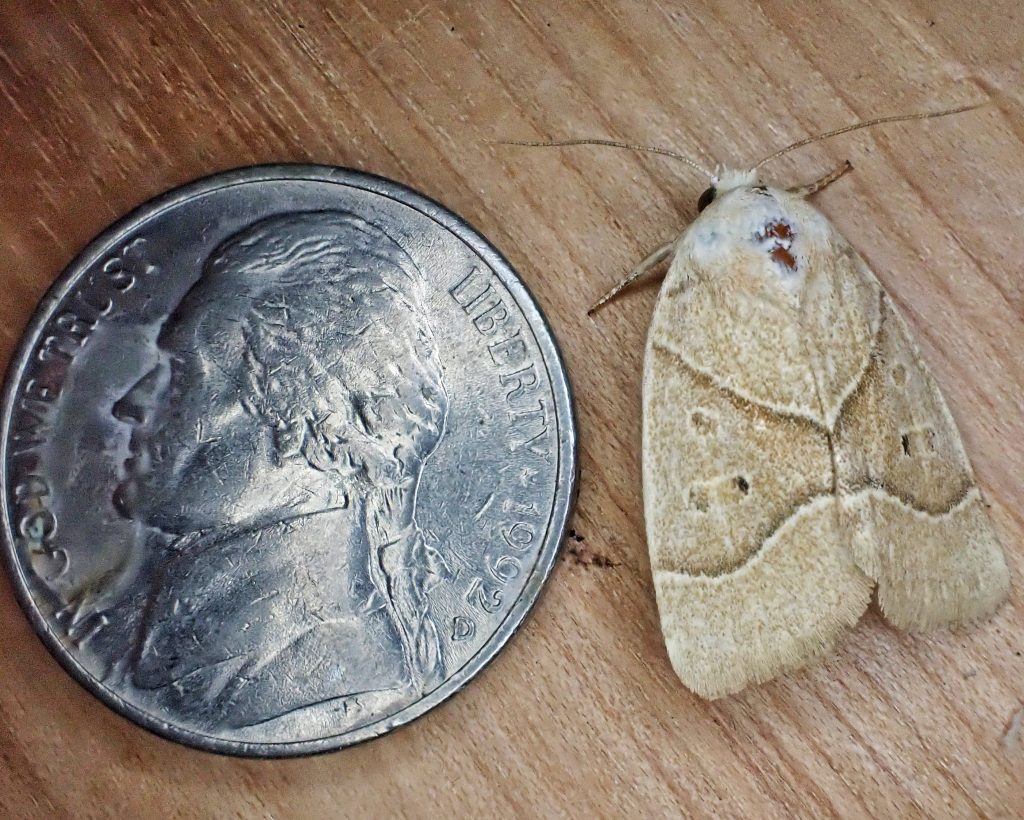
Description– Medium sized (fw length 13-16mm) orange brown moth that is often darker in the median area; antemedial line at an oblique angle, postmedial line curves gently upward near the costa; the orbicular spot is round and outlined in yellow, the reniform spot is capsule-shaped and often has dark spot on interior margin; hindwing is off-white to yellowish.
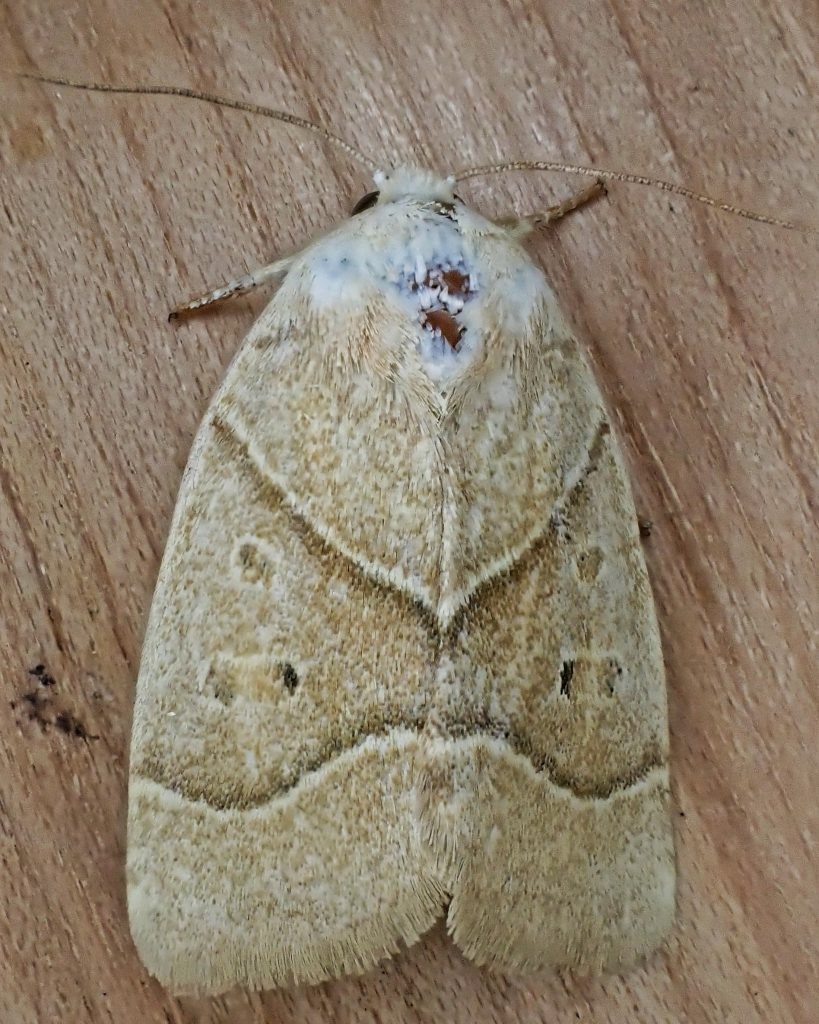
Similar species– “This species can be identified by its uniform orange forewing marked with pale yellow lines and spots. Species of Ipimorpha have smooth even forewing lines and yellow color but are more mottled and have darker hindwings than C. calami.” PNW Moths | Cosmia calami; Datana sp. have obvious medial lines that Cosmia calami lack.
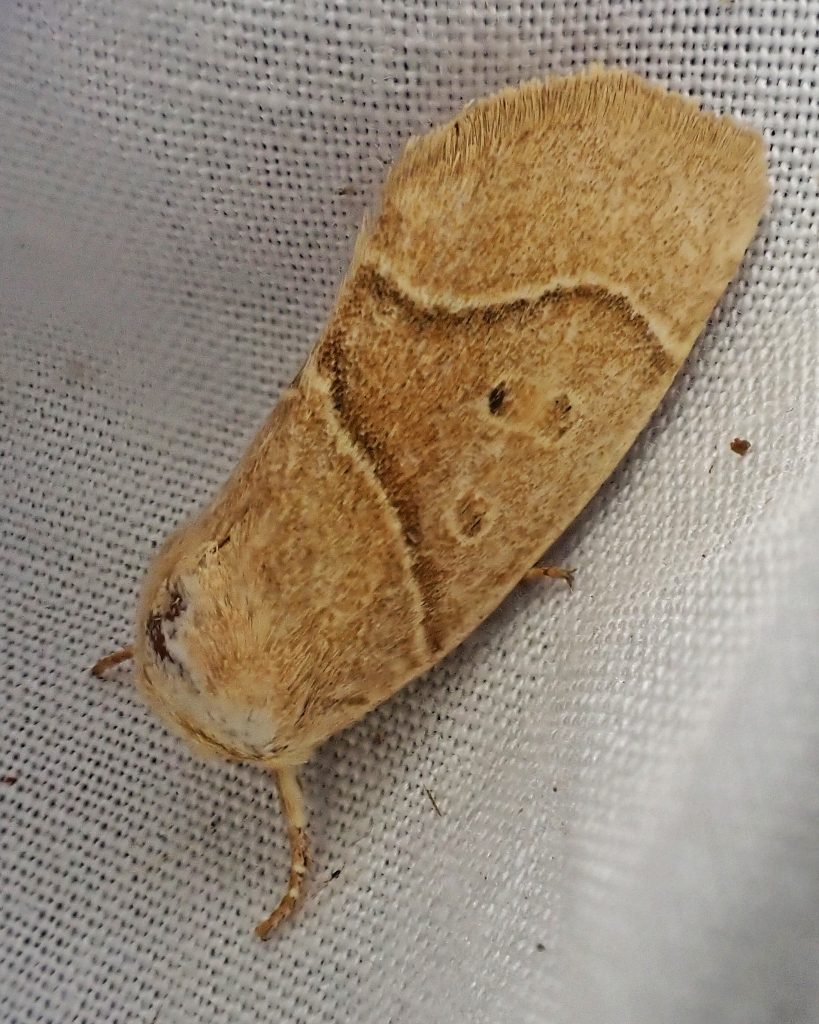
Habitat– “This species is common in oak forests and oak woodlands throughout much of North America. In the Pacific Northwest, this species is abundant in oak forests and mixed hardwood forests with oaks at low elevations west of the Cascades, and in oak woodlands along the east slope of the Cascades.” PNW Moths | Cosmia calami
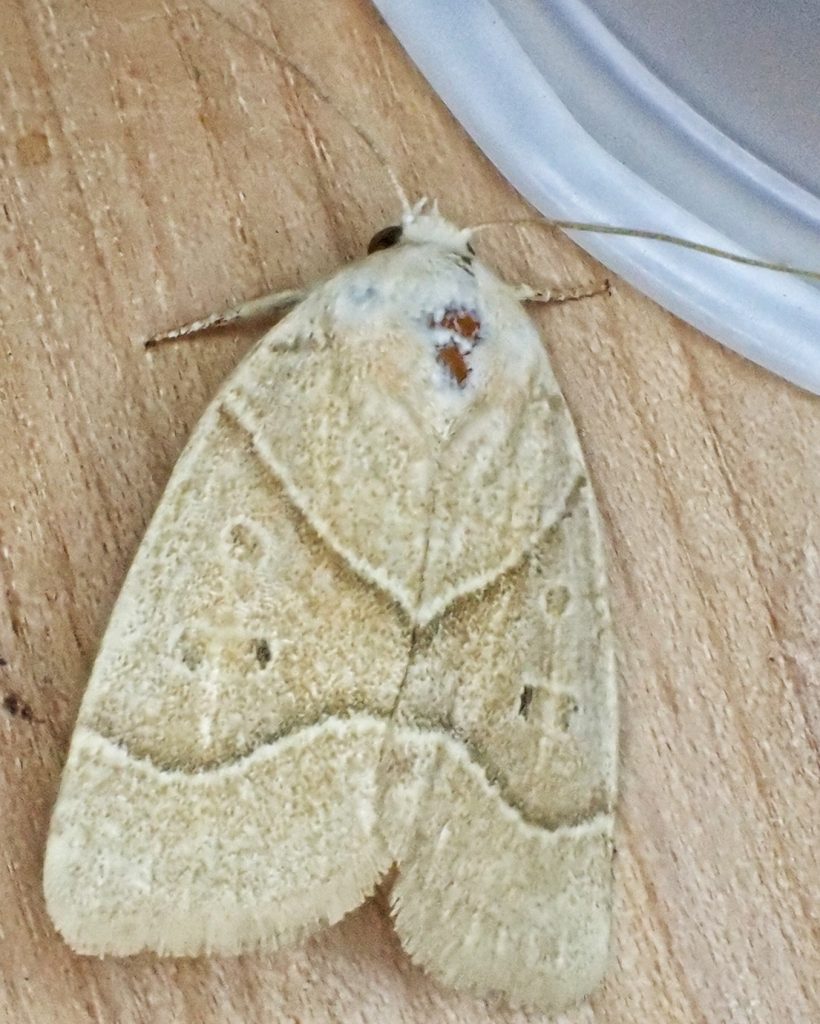
Range– “This species is widely distributed in North America. It occurs from Nova Scotia across the Continent wherever oaks are found. The southern limits of its range are northern Florida, Texas, Arizona, and southern California and the northern limit is Manitoba…Cosmia calami occurs most commonly west of the Cascade Mountains as far north as southwestern British Columbia. It has a more limited distribution east of the Cascades where it has been collected in Klamath County in Oregon and from Klickitat County to Kittitas County in south-central Washington.” PNW Moths | Cosmia calami
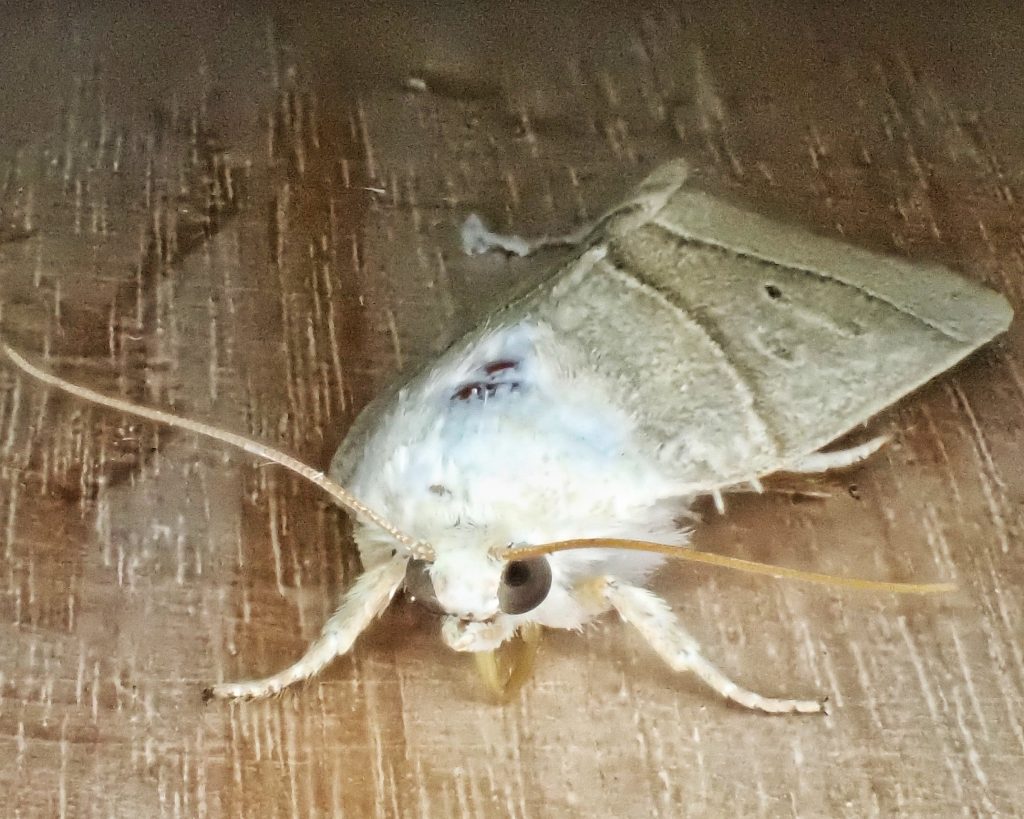
Eats– “Cosmia calami is a foodplant specialist feeding on oaks (Quercus spp.) in the Fagaceae, but has also been found on wild hazelnut (Corylus cornuta) in the Betulaceae. The primary foodplant in the Pacific Northwest is Oregon white oak (Q. garryana), and larvae can reach full development eating only oak leaves. However in nature, the species is particularly carnivorous, feeding on insects and other caterpillars. It particularly prefers eating inchworm (Geometridae) larvae.” PNW Moths | Cosmia calami
Eaten by– Presumably a host for parasitoids in Hymenoptera and Diptera, and probably preyed upon by insectivores of all classes, but I can find nothing specific for this species.
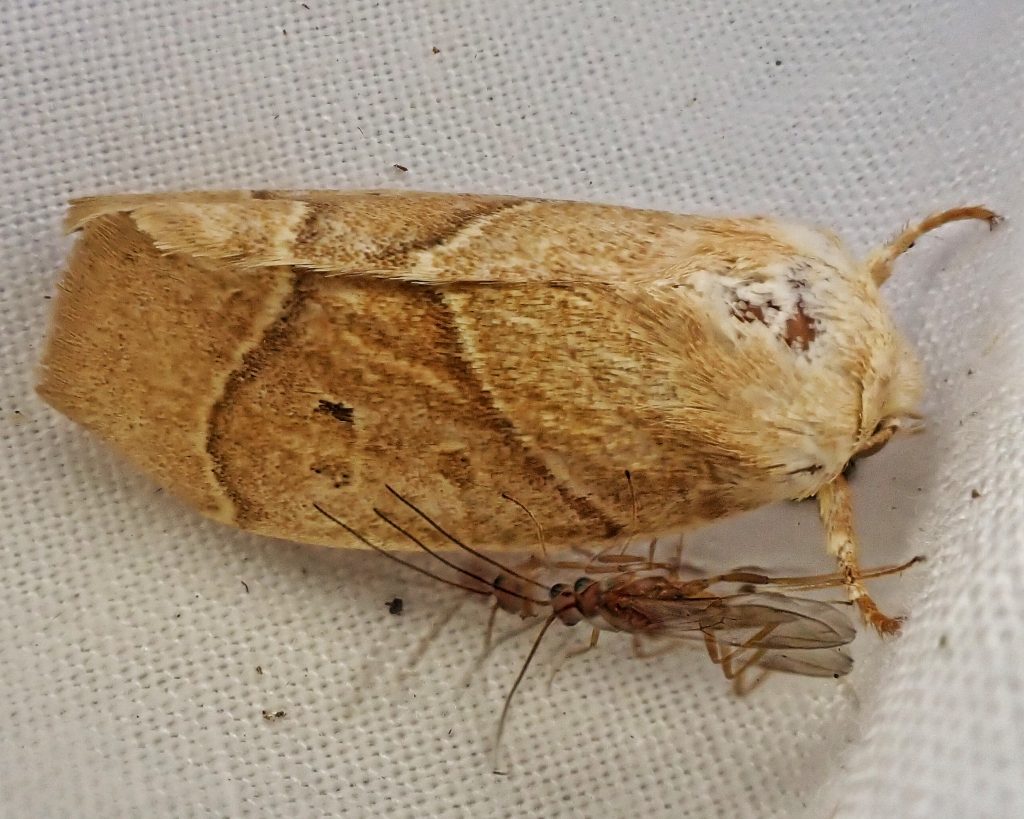
Adults active– “The adults are on the wing in the summer and have been collected from early July until early September in the Pacific Northwest. They are commonly collected at lights.”
Life cycle– It appears that this species is univoltine, but I can find nothing else on its life history.
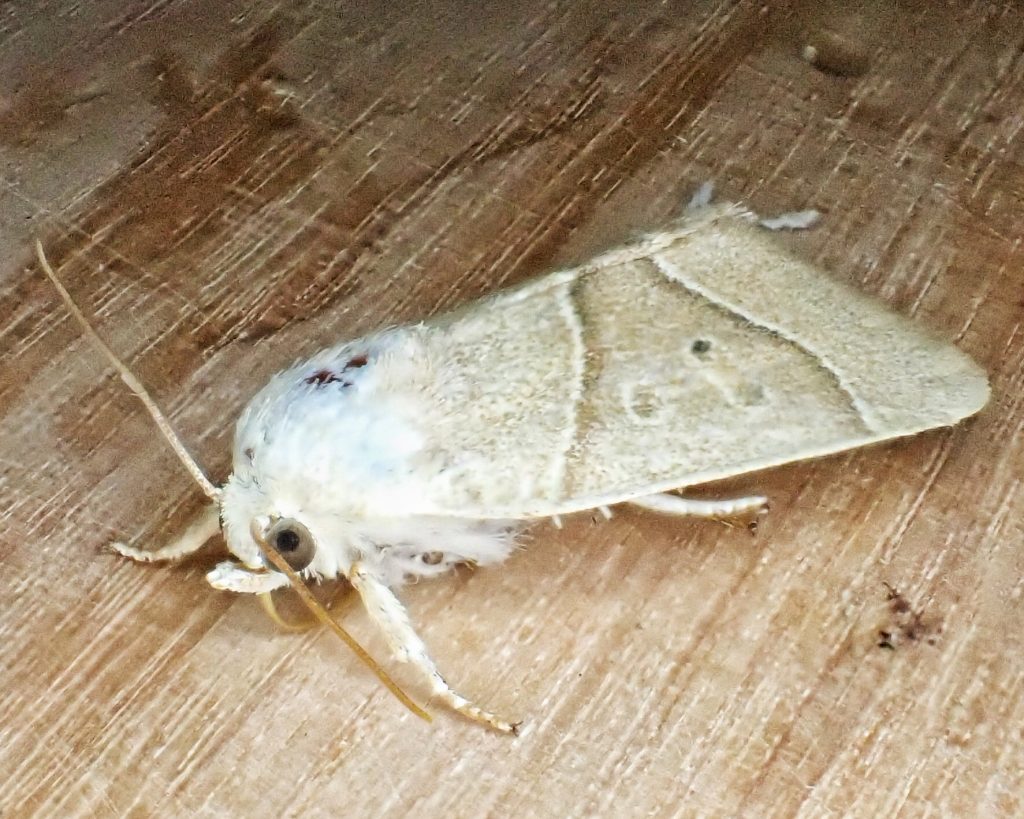
Etymology of names– Cosmia may be from the Greek word for ‘adorned’ (according to ‘An Accentuated List of the British Lepidoptera, with Hints on the Derivation of the Names”; multiple authors; 1858), or it may be from the Greek word for ‘well ordered/becoming (according to “The Scientific Names of the British Lepidoptera: Their History and Meaning”; A. Maitland Emmet; 1991)- apparently Ochsenheimer wasn’t clear about his reference. The specific epithet calami may be from the Greek for ‘reed-like’, but I cannot verify that, nor explain what it may reference. Nor can I find out what dun-bar refers to, although my guess is that it has something to do with the darker median area.
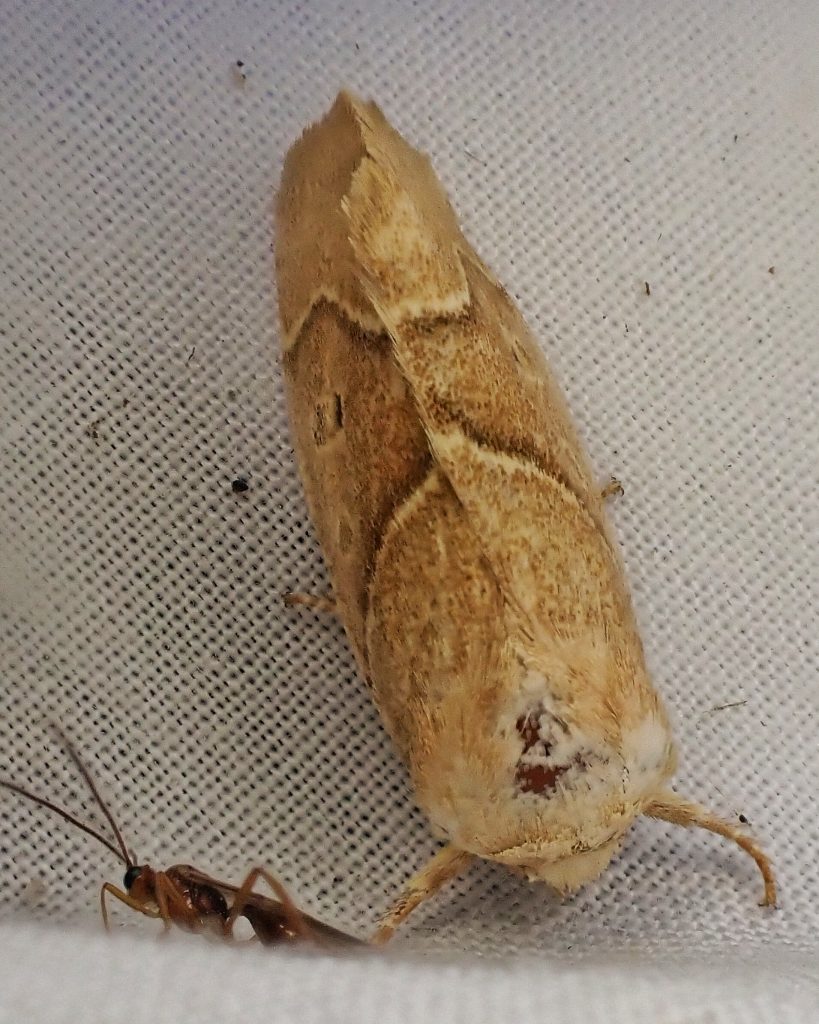
Species Cosmia calami – American Dun-bar Moth – Hodges#9815 – BugGuide.Net
http://mothphotographersgroup.msstate.edu/species.php?hodges=9815
https://images.peabody.yale.edu/lepsoc/jls/1990s/1995/1995-49(4)412-Pierce.pdf
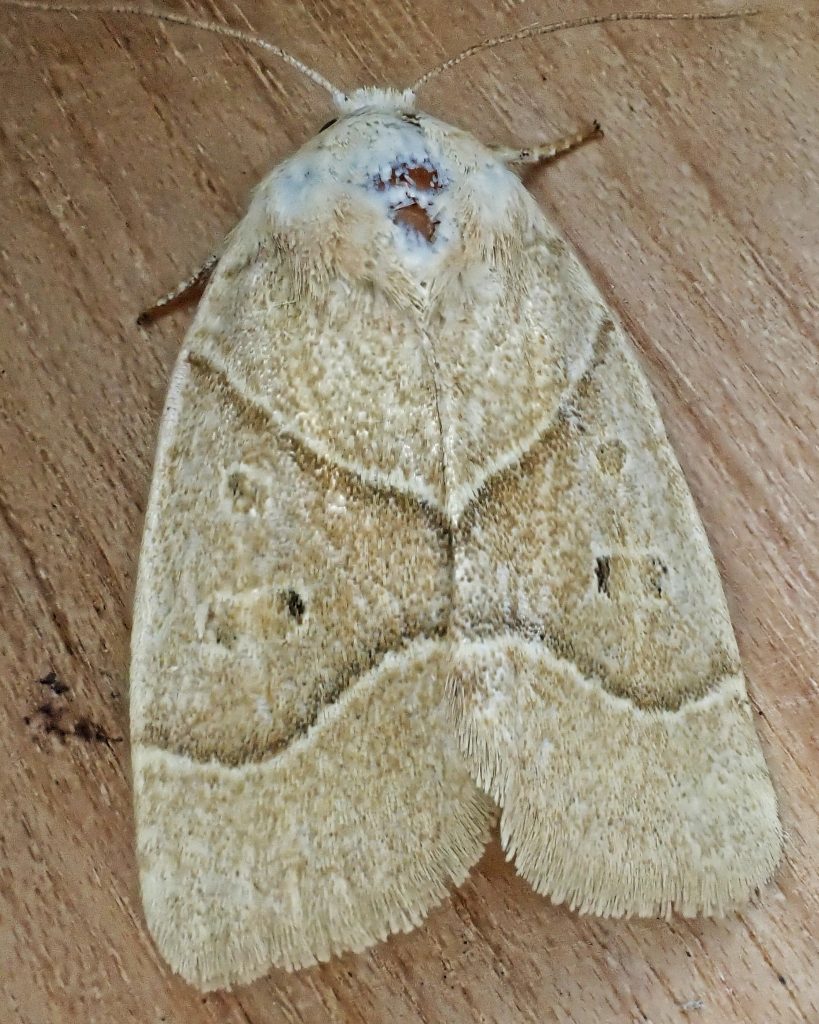
Very interesting that the caterpillars can also be carnivorous. I am assuming that your -eats- subheading refers mainly to what the caterpillars eat, since the adults don’t have chewing mouthparts. If so, I wonder what the adults normally feed on and what their preferences are?
Many adult moths don’t feed at all, and those that do eat nectar, rotting fruit, sap/pitch, and sometimes well minerals feces.